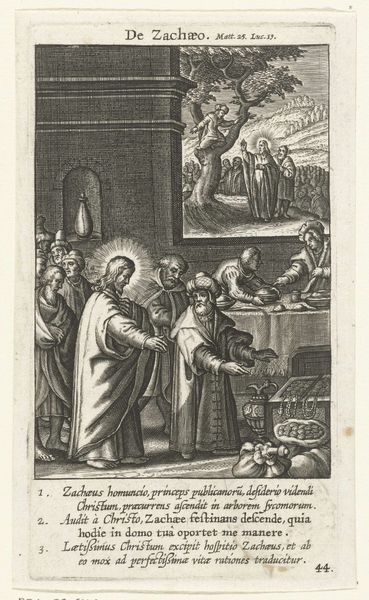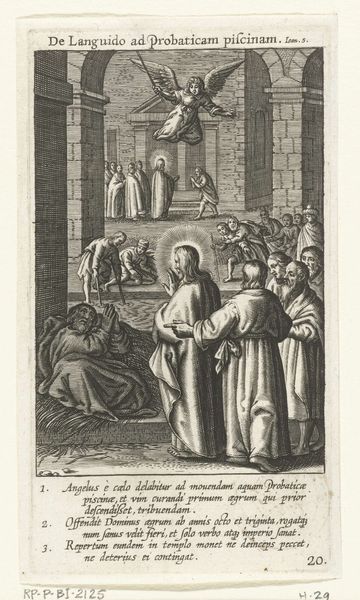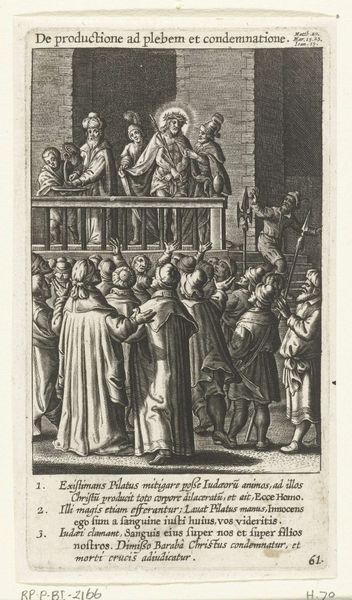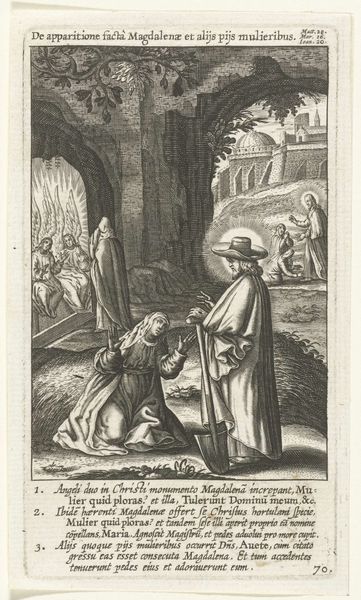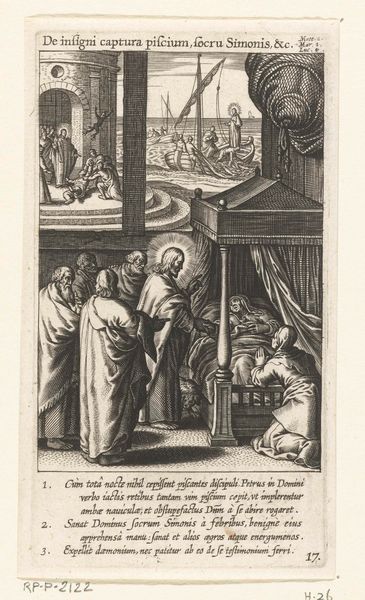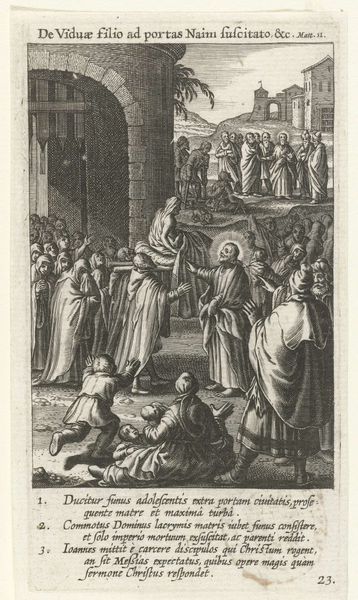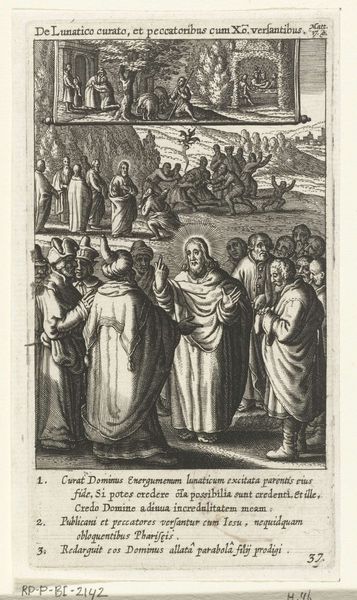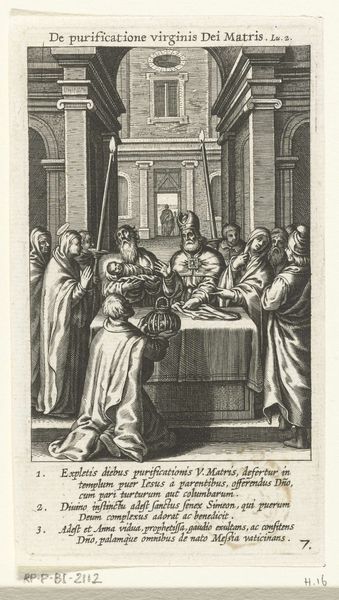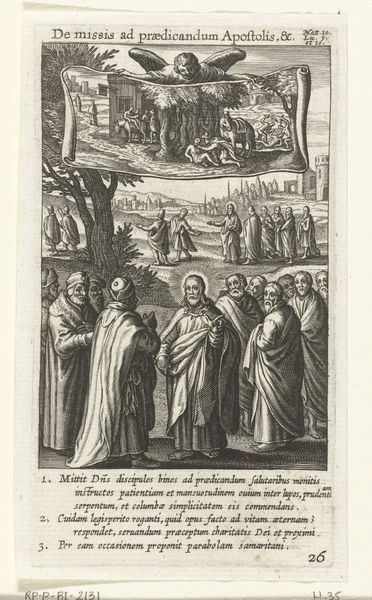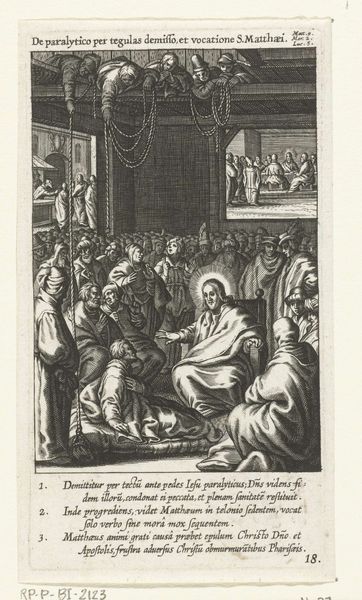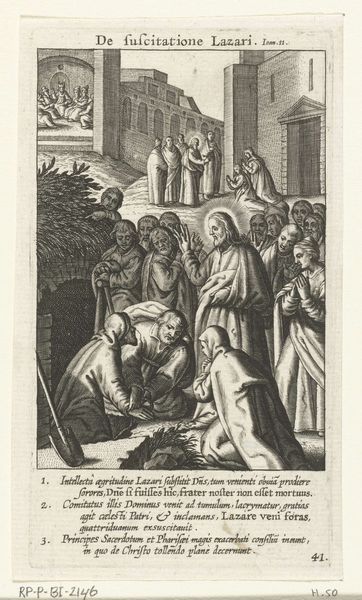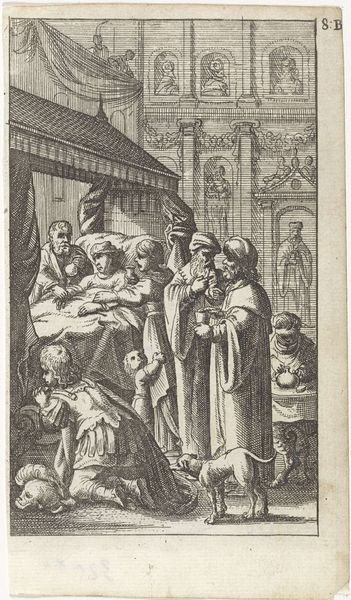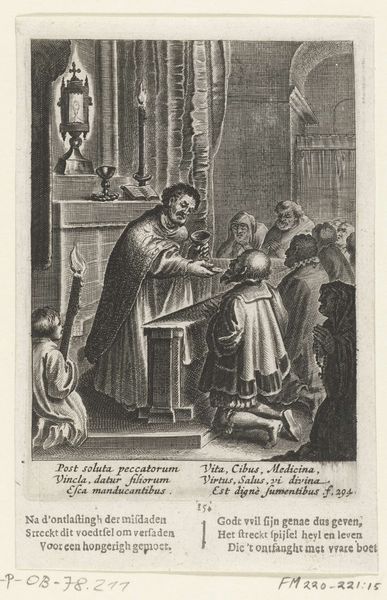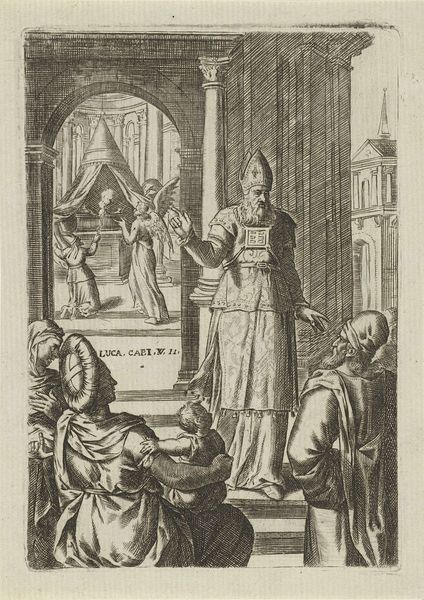
Christus geneest vrouw die lijdt aan bloedverlies 1590 - 1622
0:00
0:00
print, engraving
#
baroque
# print
#
old engraving style
#
figuration
#
history-painting
#
engraving
Dimensions: height 133 mm, width 73 mm
Copyright: Rijks Museum: Open Domain
Editor: Here we have "Christus geneest vrouw die lijdt aan bloedverlies," or "Christ Healing the Woman with Bleeding," an engraving by Boëtius Adamsz. Bolswert, dating from 1590 to 1622. The detail achieved with just line work is incredible. What's your take on this piece? Curator: Well, let's think about the process. Look at the engraving technique: the labour involved, the precise cuts into the metal plate to create this scene. Consider the consumption of these prints; how many were made, who purchased them, and what social stratum they occupied. Editor: So you're less concerned with the religious narrative itself? Curator: Exactly! The narrative, while present, serves as a vehicle. Look at how the composition guides the viewer. How does the artist’s hand create the depth and perspective needed? The cost, labor and consumption would influence the composition as well. Editor: Interesting. So the meaning isn’t just in the biblical story, but also in the economic realities of its production and the accessibility of religious imagery through printed form. Curator: Precisely. Prints democratized art, but also subjected sacred stories to the forces of the market. What materials were used? The inks, the paper? Are they costly materials or economical substitutes? These all shape our understanding of this print’s place in the world. Consider also the skill, time and expense required to engrave an image onto a metal plate to produce prints, such as this. These details would impact pricing, readership and the artist's role. Editor: I hadn't thought about it that way before. Seeing it as a product shaped by labor and materials opens up a whole new way of understanding it. Curator: Indeed. By shifting the focus to materiality, we can unearth previously unseen histories embedded within the artwork. Editor: Thanks! That perspective gives me a lot to think about! Curator: My pleasure. Every artwork is an artifact. The cultural and historical framework around this print helps frame our contemporary experience of this engraving.
Comments
No comments
Be the first to comment and join the conversation on the ultimate creative platform.
